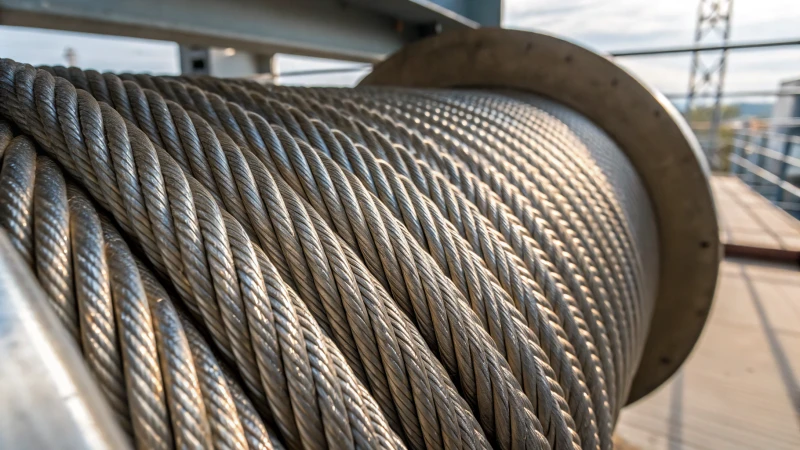
Navigating the world of steel wire ropes for anti-sway elevators can be daunting, but choosing the right one is crucial.
The best steel wire ropes for anti-sway elevators are those that offer high stability and resilience to dynamic loads, along with excellent vibration dampening. Opt for ropes with compact constructions like 6×36 or 8×25, which ensure superior load distribution and shock absorption, minimizing sway during elevator operations.
I remember my first project involving elevator installations—it felt like a massive jigsaw puzzle with pieces that had to fit just right. The steel wire ropes were not just another piece; they were the backbone of the entire operation, literally holding everything together. Understanding the critical role they play, I delved into researching every tiny specification and feature that could make a difference. From materials to technology, each aspect was like a new chapter in a book I couldn’t put down. Let’s explore these essential elements that enhance both performance and safety in anti-sway applications.
6×36 ropes offer better vibration dampening than 8×25 ropes.False
Both constructions provide good dampening; effectiveness varies by application.
Compact construction enhances load distribution in steel wire ropes.True
Compact construction allows even load distribution, reducing wear and tear.
What Makes an Anti-Sway Steel Wire Rope Effective?
Ever found yourself wondering if the right steel wire rope could make all the difference? It sure can!
The best anti-sway steel wire ropes are those that excel in dampening vibrations, maintaining stability, and handling dynamic loads effectively. Key features include compact construction, shock-absorbing coatings, and pre-stretching, all of which work together to reduce sway during lifting operations.
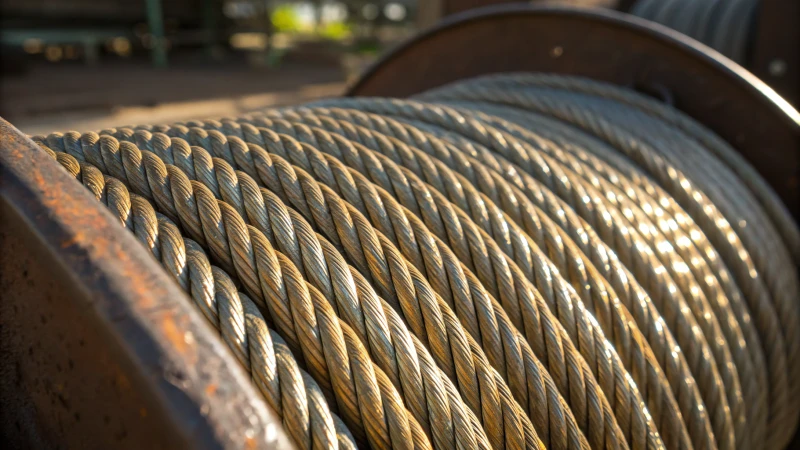
Vibration Dampening and Stability
I remember the first time I realized how crucial vibration dampening was. It was like watching a ballet of steel, where every movement had to be precise and controlled. Anti-sway steel wire ropes, with their compact constructions1 like 6×36 or 8×25, distribute loads evenly and absorb vibrations seamlessly. This is especially vital in cranes or elevators, where every oscillation can mean the difference between smooth sailing and a shaky ride.
Shock-Absorbing Coatings
Picture this: you're on a roller coaster, bracing for the drop. That heart-stopping moment when energy needs to dissipate safely is similar to how shock-absorbing coatings work on these ropes. They’re designed to reduce sway by dissipating energy, safeguarding both the equipment and whatever is being lifted. Diving into the specifics of these coatings can uncover a world of benefits in high-stress environments.
Pre-Stretching Advantages
Think of pre-stretching like yoga for steel wire ropes—it’s all about flexibility and tension. By stretching the rope before use, slack is minimized, enhancing stability significantly. Pre-stretched ropes maintain better tension, which means less sway and increased safety during operations.
Comparison of Key Features
| Feature | Benefit |
|---|---|
| Compact Construction | Even load distribution; superior vibration dampening |
| Shock-Absorbing Coatings | Reduces sway amplitude; enhances equipment longevity |
| Pre-Stretching | Minimizes slack; improves tension maintenance and operational safety |
Industry Standards and Compliance
Navigating industry standards can feel like decoding a complex map, but it's crucial for selecting reliable steel wire ropes. Ensuring compliance with these regulations guarantees performance under specific conditions. Exploring industry certifications2 related to steel wire rope manufacturing can illuminate quality assurance aspects. Plus, understanding installation guidelines3 ensures these ropes are applied correctly for optimal performance.
Compact construction enhances load distribution.True
Compact constructions, like 6×36, evenly distribute loads, reducing sway.
Pre-stretched ropes increase operational slack.False
Pre-stretching reduces slack, maintaining tension and improving stability.
How Does Rope Construction Impact Elevator Performance?
Have you ever wondered what makes an elevator glide so smoothly, even as it soars up a skyscraper?
Rope construction plays a crucial role in elevator performance by affecting stability, vibration dampening, and load distribution. Using steel wire ropes with compact constructions, like 6×36 or 8×25, enhances these elements significantly.
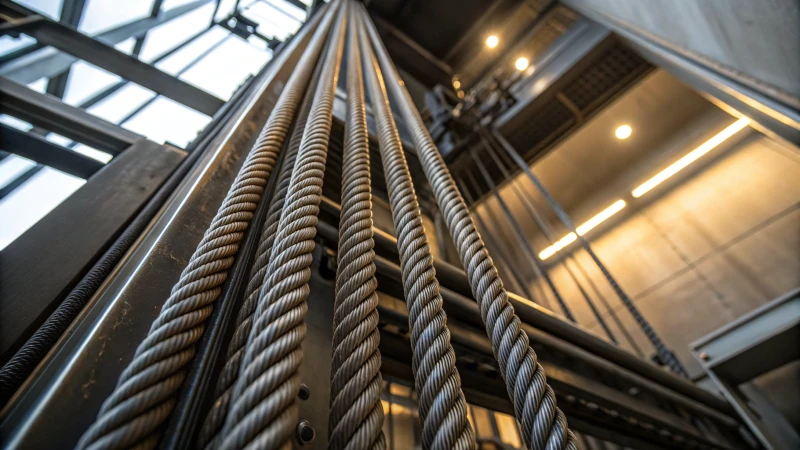
The Role of Rope Construction in Stability and Safety
Imagine stepping into an elevator, ready to ascend a towering building. Now picture those ropes—those unsung heroes—working silently to ensure your ride is smooth and safe. They are not just about pulling weight; they stabilize the entire system. Especially in high-rise buildings, where minimizing swaying and oscillations is crucial, compact constructions like 6×364 or 8×255 are preferred for their ability to distribute load effectively and maintain stability.
Vibration Dampening: A Key Performance Factor
I remember my first time in an old elevator that shuddered at every stop. It felt like riding a rickety roller coaster! Thankfully, modern elevators have ropes designed to absorb and dissipate dynamic forces, offering a smoother experience. Steel wire ropes, particularly those pre-stretched, excel at vibration dampening. Incorporating shock-absorbing coatings can further reduce swaying amplitude6, ensuring a comfortable ride.
| Rope Type | Vibration Dampening | Load Distribution |
|---|---|---|
| 6×36 | High | Excellent |
| 8×25 | Moderate | Very Good |
Pre-Stretching and Rope Longevity
I’ve learned that pre-stretching ropes before they get installed can make all the difference. This technique reduces slack and maintains tension over time, meaning less frequent adjustments are needed. It’s especially vital for elevators that see heavy use, like those bustling up and down in commercial buildings. Understanding these intricate details of rope construction can truly optimize elevator performance.
By choosing the right rope type and construction method, engineers can enhance an elevator's efficiency and safety. For those interested in diving deeper into these aspects, exploring advanced anti-sway technologies7 for skyscrapers is a fascinating next step.
Compact rope designs minimize elevator swaying.True
Compact constructions like 6×36 and 8×25 enhance stability.
Pre-stretching ropes increases elevator maintenance needs.False
Pre-stretching reduces slack, lowering maintenance frequency.
Why Should You Pre-Stretch Steel Wire Ropes?
Ever wondered why steel wire ropes in heavy machinery seem to last forever?
Pre-stretching steel wire ropes eliminates initial slack and aligns tension evenly across strands, crucially boosting stability and durability under load. This process is vital for ensuring safety and optimal performance in demanding applications like construction and mining.
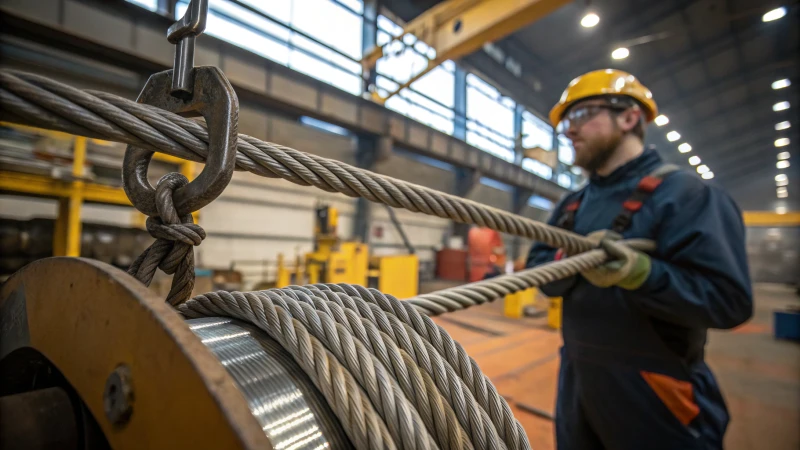
Understanding Pre-Stretching
Imagine you're about to climb a steep mountain, and you want your climbing rope to be as reliable as possible. That's essentially what pre-stretching does for steel wire ropes. It involves applying a controlled load to the ropes before they're put to work, ironing out any slack and ensuring even tension across all strands. I remember when I first learned about this process—it was like discovering the secret ingredient in a perfect recipe. Pre-stretching is especially beneficial in situations where precise load handling is crucial, much like ensuring every step is secure when you're hiking a tricky trail.
Benefits of Pre-Stretching:
- Reduced Slack: Just like breaking in a new pair of shoes, pre-stretching minimizes initial slack, allowing the rope to perform at its best right from the start.
- Enhanced Stability: By distributing tension evenly among the strands, it boosts stability during those critical moments of load application.
- Improved Durability: Think of it as reducing friction in a car engine—less wear and tear means a longer service life for your ropes.
Applications in Various Industries
Construction and Engineering
In construction, where I've spent many a day on bustling sites, pre-stretched ropes are like the unsung heroes of lifting operations. They prevent those nerve-wracking sudden jerks during loading, which not only boosts safety but also keeps everything running smoothly. I recall a project where a sudden jerk almost threw our timeline off course, underscoring how vital pre-stretching is.
| Benefits | Description |
|---|---|
| Safety | Prevents sudden jerks during load application, reducing accident risks. |
| Precision | Ensures accurate load positioning, essential for construction projects. |
Mining Operations
In the mining industry, where conditions are harsh and loads dynamic, pre-stretched ropes are lifesavers. They offer reliability that you can count on, much like a trusted friend who's always there when things get tough.
Key Considerations:
Technical Insights on Pre-Stretching Process
Load Application Techniques:
Pre-stretching typically involves loading the rope close to its working capacity. It’s akin to training for a marathon—you want to prepare without overdoing it. Monitoring the load application carefully is crucial to avoid damaging the rope.
Impact on Rope Properties:
Pre-stretching can make ropes slightly more rigid and less prone to deform under load—perfect for operations demanding consistent mechanical properties such as marine operations10 or heavy lifting in manufacturing11.
Industry Standards and Recommendations
Following industry standards in the pre-stretching process ensures both safety and effectiveness. Organizations like the International Organization for Standardization (ISO) provide guidelines that are essential for manufacturers and users alike. Compliance with these standards doesn't just ensure safety—it enhances the overall performance of steel wire ropes across various applications.
For further details on specific standards, check out resources from ISO guidelines12.
Pre-stretching eliminates initial elongation in steel wire ropes.True
Pre-stretching applies a load to remove slack, ensuring uniform tension.
Pre-stretching increases the elasticity of steel wire ropes.False
Pre-stretching reduces elasticity, making ropes more rigid and stable.
How Can I Extend the Life of Steel Wire Ropes?
Steel wire ropes are the unsung heroes of many industries, from construction to mining. Their lifespan can be greatly extended with a few key maintenance tricks. Curious about how to keep them strong and reliable?
To extend the life of steel wire ropes, prioritize regular inspections, proper lubrication, and ideal storage conditions. These steps help identify early signs of wear, reduce friction, and protect the ropes from environmental damage.
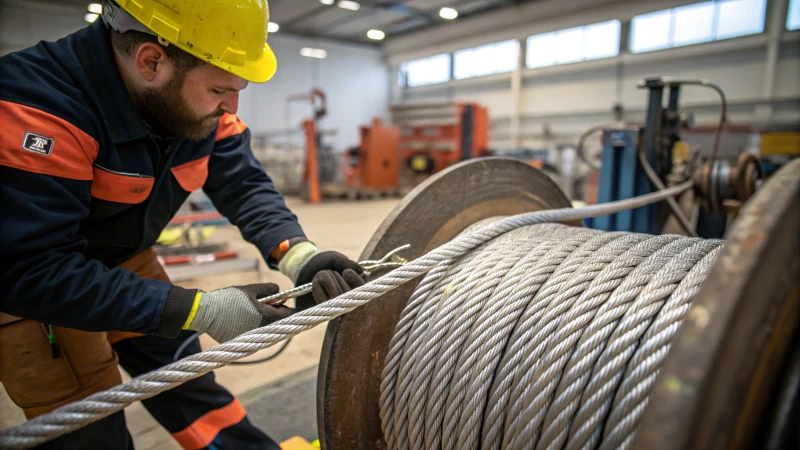
Routine Inspections
I remember my first day on the job site, nervously checking a steel wire rope for the first time. It felt like a huge responsibility knowing that so much depended on these metal strands holding strong. Regular inspections became my ritual—a chance to catch fraying, corrosion, or broken wires before they could cause trouble. It's like giving your ropes a health check-up, using a wire rope gauge13 to monitor their diameter and catch any sneaky wear.
Inspection Checklist:
| Aspect | Check For |
|---|---|
| Surface | Fraying, corrosion, broken wires |
| Diameter | Reduction using a wire rope gauge |
| Lubrication | Adequate coverage and condition |
I've also found that incorporating non-destructive testing14 methods like magnetic particle inspection gives you a deeper look into the rope’s condition.
Proper Lubrication
Ah, lubrication—the unsung hero in the battle against wear and tear. I've learned to treat my ropes to a generous coating of specialized lubricants15, especially when working in humid or abrasive environments. It’s like giving them a protective shield against friction and rust.
- Frequency: Tailor it to your environment; more often if you're dealing with high humidity.
- Method: Pressure lubrication systems work wonders in ensuring every strand is cared for.
Adequate Storage
I once lost a perfectly good rope to poor storage—a hard lesson learned. Now, I swear by storing ropes in dry, well-ventilated areas. Moisture is the enemy here, and protective covers16 are your best friends against dust and debris.
Storage Tips:
- Positioning: Lay them horizontally; no one likes a kinked rope.
- Environment: Keep things cool and dry; think of it as climate control for your ropes.
By embracing these practices, I’ve seen firsthand how they can prolong the life of steel wire ropes, ensuring that projects run smoothly and safely. It’s all about treating them with the care they deserve.
Routine inspections extend steel wire ropes' lifespan.True
Regular checks identify wear early, preventing failures.
Storing wire ropes vertically prevents kinks.False
Horizontal storage is recommended to avoid kinks.
Conclusion
Selecting the best steel wire rope for anti-sway elevators involves choosing compact constructions like 6×36 or 8×25, which enhance stability, vibration dampening, and load distribution.
-
Exploring this can provide deeper insights into how compact constructions enhance load distribution and vibration dampening. ↩
-
Understanding certifications can help ensure the product meets quality standards and compliance requirements. ↩
-
Proper installation is critical for performance; guidelines ensure correct application and maximized safety. ↩
-
Discover why 6x36 steel wire ropes are preferred for their stability and load distribution in elevator applications. ↩
-
Learn how 8x25 steel wire ropes provide moderate vibration dampening and excellent load distribution. ↩
-
Understand how shock-absorbing coatings help minimize sway and enhance elevator performance. ↩
-
Explore cutting-edge anti-sway technologies improving elevator stability in tall buildings. ↩
-
Learn how pre-stretched ropes manage dynamic loads effectively, crucial for mining applications. ↩
-
Explore how pre-stretched ropes withstand harsh environments, enhancing reliability. ↩
-
Discover how pre-stretching benefits marine applications requiring consistent mechanical properties. ↩
-
Understand how manufacturing industries benefit from the rigidity and consistency of pre-stretched ropes. ↩
-
Explore ISO standards for safe and effective pre-stretching practices. ↩
-
Learning how to measure wire rope diameter accurately helps ensure it remains within safe operational limits. ↩
-
Exploring non-destructive testing methods aids in detecting internal defects without damaging the rope. ↩
-
Discovering the best lubricants can enhance rope performance by reducing friction and corrosion. ↩
-
Understanding the benefits of protective covers can help shield ropes from environmental damage. ↩

